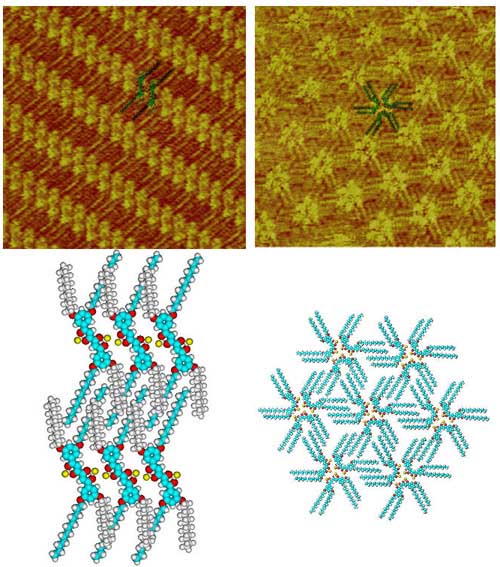| |
Dirk Rohde, Cun-Ji Yan, Hui-Juan Yan, and Li-Jun Wan*
The adsorption behavior of bis(4,4’-(m,m’-di(dodecyloxy)phenyl)-2,2’-difluoro-1,3,2-dioxaborine) were studied on HOPG surfaces by STM. It was found that the structure of the adlayer can be converted from lamellar to hexagonal through a thermal-annealing process. The hydrogen bonding between the molecules causes a break in molecular symmetry upon adsorption onto the surface and results in chiral assemblies from achiral molecules that were previously clearly observed by STM. For the first time, a thermally induced trans-to-cis isomerization of adsorbed molecules was observed and the thermodynamically stable cis-isomer adlayers were created. Although thermodynamically unstable in solution, the cis isomers become remarkably stable when adsorbed on the HOPG surface. By using only thermal stimulation at different temperatures, pure trans- and cis-isomer adlayers can be obtained. The results of this research are significant in the study of self-assembly and molecular architecture on solid surfaces.
Angew. Chem. Int. Ed. (2006, Vol. 45, p.3996-4000.)

Figure. STM image and model of DOB molecules on HOPG surface before thermal annealing(left); STM image and model of DOB molecules on HOPG surface after thermal annealing (right). , |
|
